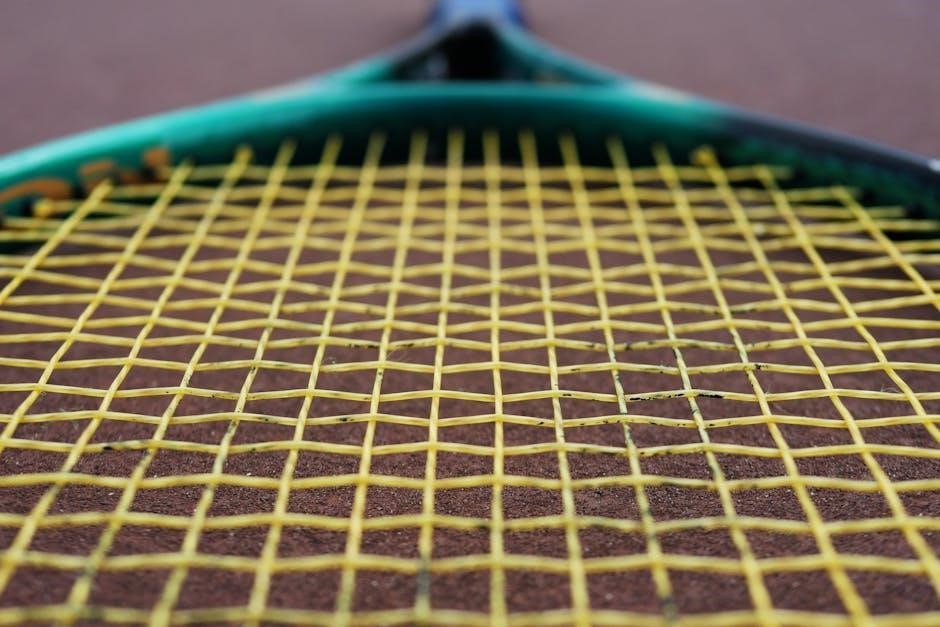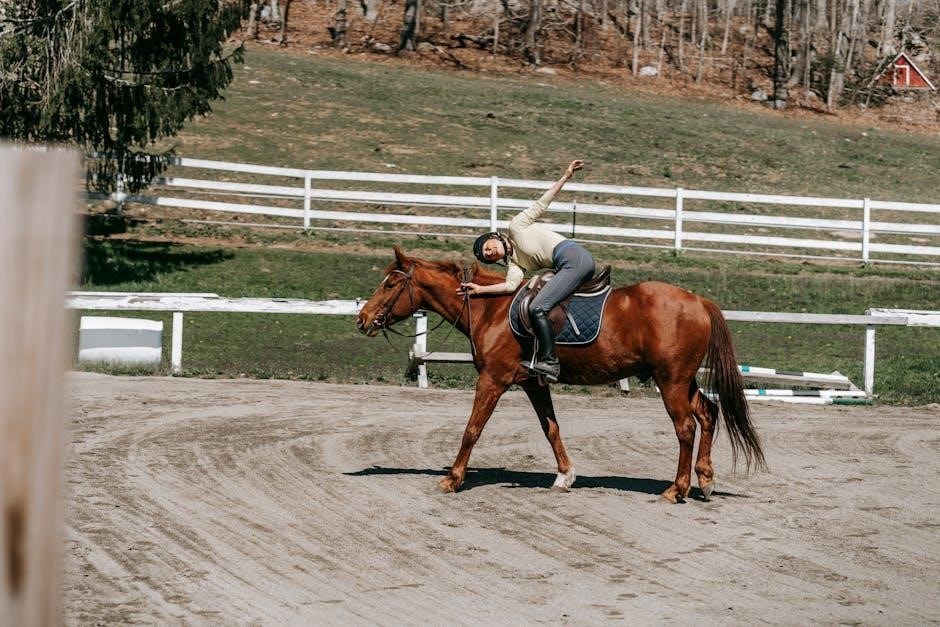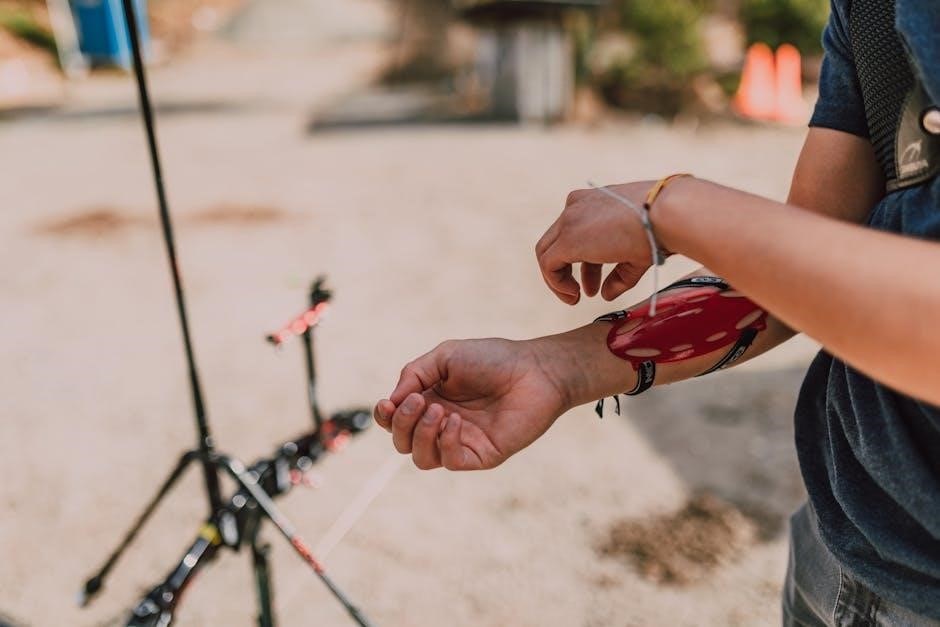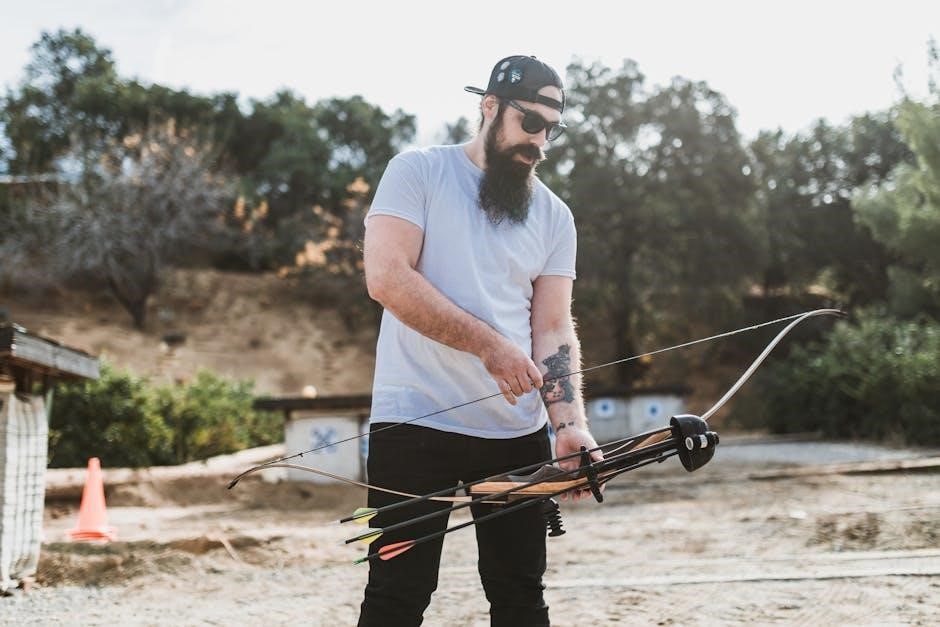tennis racket tension guide
String tension significantly impacts a tennis racket’s performance, affecting control, power, and comfort. Understanding proper tension is key to optimizing your game and reducing injury risk.
From professional players to amateurs, string tension is a critical factor, with preferences varying widely based on skill level, climate, and personal playstyle, making it a vital adjustment for success.
Brief History of String Tension in Tennis
The evolution of string tension in tennis began in the mid-1800s with natural gut strings, which were the standard for over a century. In the 1920s, steel strings emerged, offering higher durability but less playability. The 1980s saw the introduction of synthetic materials like nylon, which balanced performance and cost. Modern advancements include polyester strings, known for their spin and durability. Tension standards were formalized in the late 20th century, with players and manufacturers adopting precise measurement tools. Today, string tension is a customizable aspect of racket setup, reflecting technological and player preference advancements.
Importance of Proper String Tension for Performance
Proper string tension is crucial for maximizing performance on the court. Higher tensions provide greater control and precision, ideal for skilled players seeking consistency. Lower tensions, conversely, generate more power and spin, benefiting those with slower swing speeds. Incorrect tension can lead to reduced accuracy, diminished power, and increased risk of injury. The right balance enhances playability, ensuring optimal ball response and comfort. Players must consider their technique, playing style, and physical needs when selecting tension to unlock their full potential and enjoy a more rewarding game.
Understanding String Tension
String tension refers to the tightness of the strings in a tennis racket, measured in pounds. It influences power, control, and comfort, requiring precise adjustment for optimal performance.
What is String Tension?
String tension refers to the tightness of the strings in a tennis racket, measured in pounds (lbs). It determines how tightly the strings are pulled during installation. Higher tension provides more control and precision but can increase arm strain. Lower tension offers more power and comfort but may reduce accuracy. The ideal tension varies depending on the player’s skill level, playing style, and the type of strings used. For example, natural gut strings are typically tensioned between 50-60 lbs, while polyester strings might be lower. Proper tension balances performance and comfort, making it a critical factor in a player’s game.
How String Tension Impacts Playing Performance
String tension directly influences a player’s performance by affecting power, control, and spin. Higher tension offers greater precision and reduced string movement, making it ideal for advanced players seeking consistency. Lower tension generates more power and spin potential, benefiting players with slower swing speeds or those who prioritize comfort. Additionally, tension impacts the racket’s feel; tighter strings provide a firmer response, while looser strings offer a softer touch. Balancing these aspects is crucial, as improper tension can lead to reduced performance or increased injury risk, making it essential to tailor string tension to individual playing styles and preferences.
Difference Between String Tension and String Pattern
String tension refers to the tightness of the strings in a racket, measured in pounds, affecting power, control, and feel. In contrast, string pattern denotes the number of main and cross strings, influencing spin potential and durability. While tension adjusts the string’s firmness, pattern determines how they are arranged. A denser pattern offers more control and spin, but may reduce power, whereas an open pattern maximizes power and spin but sacrifices durability. Both factors must be considered together to optimize racket performance for individual playing styles and preferences, ensuring a balance between power, control, and longevity. Proper alignment of these elements is key to achieving optimal results on the court.
Player skill level, string type, climate, and personal preference are key factors in selecting ideal string tension, ensuring optimal performance and comfort during play. A player’s skill level significantly influences string tension preferences. Advanced players often opt for higher tensions, typically between 55-60 lbs, to gain better control and precision for aggressive shots. This higher tension allows for more accurate placement and reduced power, which is beneficial when aiming for sharp angles or drop shots. However, higher tensions can also increase the risk of arm strain, particularly for those with less powerful strokes. Lower tensions, around 40-50 lbs, are generally recommended for intermediate and beginner players, as they provide more power and forgiveness on off-center hits. Additionally, lower tensions can help reduce the fatigue and discomfort often associated with developing proper stroke mechanics. Intermediate players might find a medium tension, around 50-55 lbs, strikes a balance between control and power, allowing them to execute a variety of shots without sacrificing comfort. Ultimately, the choice of string tension should align with a player’s technique, strength, and style to maximize performance and minimize injury risk. The type of string significantly affects the optimal tension for a tennis racket. Natural gut strings, known for their elasticity, are typically strung at lower tensions, around 50-60 lbs, to maintain playability and comfort. Polyester strings, favored by advanced players for their durability and spin potential, are often strung tighter, between 55-65 lbs, to maximize control and reduce power. Hybrid strings, combining materials like polyester and synthetic gut, offer a balance and are usually strung in the mid-range, around 50-60 lbs, depending on the specific combination. Nylon strings, softer on the arm, are generally recommended at lower tensions, around 45-55 lbs, to enhance feel and power. Each string type has unique properties that influence the ideal tension, making it crucial to consider both the string material and player preferences when selecting the appropriate tension setting. Properly matching string type and tension ensures optimal performance, comfort, and longevity of the strings. Environmental conditions significantly influence string tension, requiring adjustments for optimal performance. In hot and humid climates, strings tend to stretch more, leading to a loss of tension over time. Players often opt for higher tensions in such conditions to maintain control. Conversely, in colder climates, strings stiffen, and lower tensions are preferred to avoid a brittle feel. Altitude also plays a role, as lower air pressure at high elevations can affect string behavior. Understanding these environmental impacts helps players adjust their tension settings to suit varying playing conditions, ensuring consistent performance across different climates and seasons. Proper adaptations enhance both playability and longevity of the strings. String tension is a highly individualized aspect of a player’s equipment, with preferences varying widely based on style and comfort. Players seeking power and spin often opt for lower tensions, allowing the ball to pocket deeper for increased energy transfer. Conversely, those prioritizing control and precision tend to prefer higher tensions, which provide a firmer, more predictable response. Personal comfort is also a key factor, as lower tensions can reduce arm strain, while higher tensions may cause discomfort for some. Ultimately, finding the ideal tension is a balance of performance goals and physical well-being, making it a critical personal choice for every player. Selecting the ideal string tension involves balancing power, control, and comfort, tailored to your skill level, playing style, and environmental conditions for optimal performance. Determining the ideal tension range starts with understanding your playing style and preferences. Lower tension offers more power and spin potential but less control, while higher tension provides precision but reduces power. Factors such as skill level, string type, and climate also play a role. Beginners often opt for lower tensions (around 40-50 lbs) for added power, while advanced players might prefer higher tensions (55-65 lbs) for better control. Testing different tensions during practice can help identify the perfect balance for your game. Consulting with a professional stringer can also provide personalized recommendations. The racquet frame plays a crucial role in tension selection, as its material and stiffness influence how strings perform. Stiffer frames provide better control with higher tensions, while flexible frames may require lower tensions to prevent loss of power. The frame’s weight and balance also affect tension choices, with lighter racquets often benefiting from slightly higher tensions for stability. Additionally, the frame’s design, including head size and string pattern, impacts tension distribution. Players should consider their racquet’s specific characteristics to optimize string tension for their playing style and preferences, ensuring a balance between power, control, and comfort. Testing and adjusting string tension is essential for achieving optimal performance. Start by hitting several shots to gauge how the tension feels in action. If the strings feel too tight, reducing tension can enhance power and comfort. Conversely, increasing tension improves control but may reduce power. Players can use tension gauges or consult a professional stringer for precise adjustments. Environmental factors, like humidity or temperature changes, may also necessitate tension tweaks. Regular testing ensures consistent playability and prevents performance decline, helping players maintain their best game throughout the season and adapt to varying conditions effectively. Regular maintenance ensures consistent string tension, preserving racket performance. Adjustments often depend on environmental changes, such as temperature or humidity, which can affect string tightness and playability. String tension naturally decreases over time due to wear and tear. Factors such as play frequency, environmental conditions, and string type influence this decline. Initially, strings may lose tension rapidly, then stabilize. Environmental factors like humidity and temperature play a significant role. For instance, high humidity can cause strings to stretch, reducing tension, while dry conditions can lead to brittleness. Additionally, the type of string material affects how tension evolves. For example, natural gut strings tend to maintain tension better than synthetic ones. Regular monitoring and adjustment are essential to maintain optimal performance and prevent sudden breaks during play. Players should also consider re-stringing their rackets periodically, especially if they notice a significant drop in tension or performance. This ensures consistent playability and minimizes the risk of injury or poor shot execution. By understanding how tension changes over time, players can take proactive measures to maintain their racket’s performance. Your racket may need re-stringing if you notice a significant loss of tension, frayed or broken strings, or misaligned strings. A noticeable decline in performance, such as reduced power or control, is another indicator. If your strings are visibly worn or exhibit excessive movement, it’s time to re-string. Additionally, if you experience frequent string breaks or the racket fails to hold tension during play, it signals that the strings are fatigued. Environmental factors like humidity and temperature can also affect string integrity. Regularly inspecting your strings and monitoring their condition ensures optimal performance and prevents mid-game failures. To maintain consistent tension, regularly check and adjust your strings based on environmental conditions. Playing in hot or humid weather may require tightening, while cooler conditions might need loosening; Store your racket in a dry place to prevent moisture from affecting tension. Avoid extreme temperature changes, as they can alter string tightness. Use a dampener to reduce vibration and extend string life. Re-string your racket every 3-6 months or sooner if signs of wear appear. Consistent maintenance ensures your racket performs optimally and prolongs the life of your strings. Optimizing racket tension balances power and control, tailored to skill, climate, and string type. Proper maintenance and adjustments ensure consistent performance, enhancing your overall tennis experience and success. Optimizing racket tension is a personal journey, requiring balance between power, control, and comfort. Higher tensions offer precision, while lower tensions boost power and reduce arm strain. Environmental factors like humidity and temperature also play a role, necessitating adjustments to maintain performance. Regular maintenance and understanding string behavior over time are crucial. By experimenting and consulting resources, players can find their ideal tension, enhancing their game and ensuring longevity of their racket strings. Tailoring these adjustments to individual needs ensures a competitive edge and a more enjoyable playing experience. For deeper insights, explore resources like John Craig’s serve tips and the Ultimate Tennis String Guide. Websites such as Perfect Tennis and Tennis.com offer detailed guides. YouTube channels like Tennis Warehouse and Essential Tennis provide video tutorials. Books like “The Tennis Drill Book” and “Tennis Strings: A Comprehensive Guide” are excellent for in-depth understanding. Additionally, consulting with certified stringers or coaches can provide personalized advice. These resources will help you refine your knowledge and make informed decisions to enhance your game. Stay updated with the latest trends in racket technology and string innovations to maintain a competitive edge.
Factors Influencing String Tension Choice
Player Skill Level and String Tension
Impact of String Type on Tension
Climate and Environmental Effects on String Tension
Personal Preference in Tension Settings

Choosing the Right String Tension
How to Determine the Ideal Tension Range

Role of Racquet Frame in Tension Selection
Testing and Adjusting Tension for Optimal Play
Maintenance and Adjustment of String Tension
How String Tension Changes Over Time
Signs Your Racket Needs Re-Stringing

Tips for Maintaining Consistent Tension
Final Thoughts on Optimizing Racket Tension
Additional Resources for Further Learning





































































